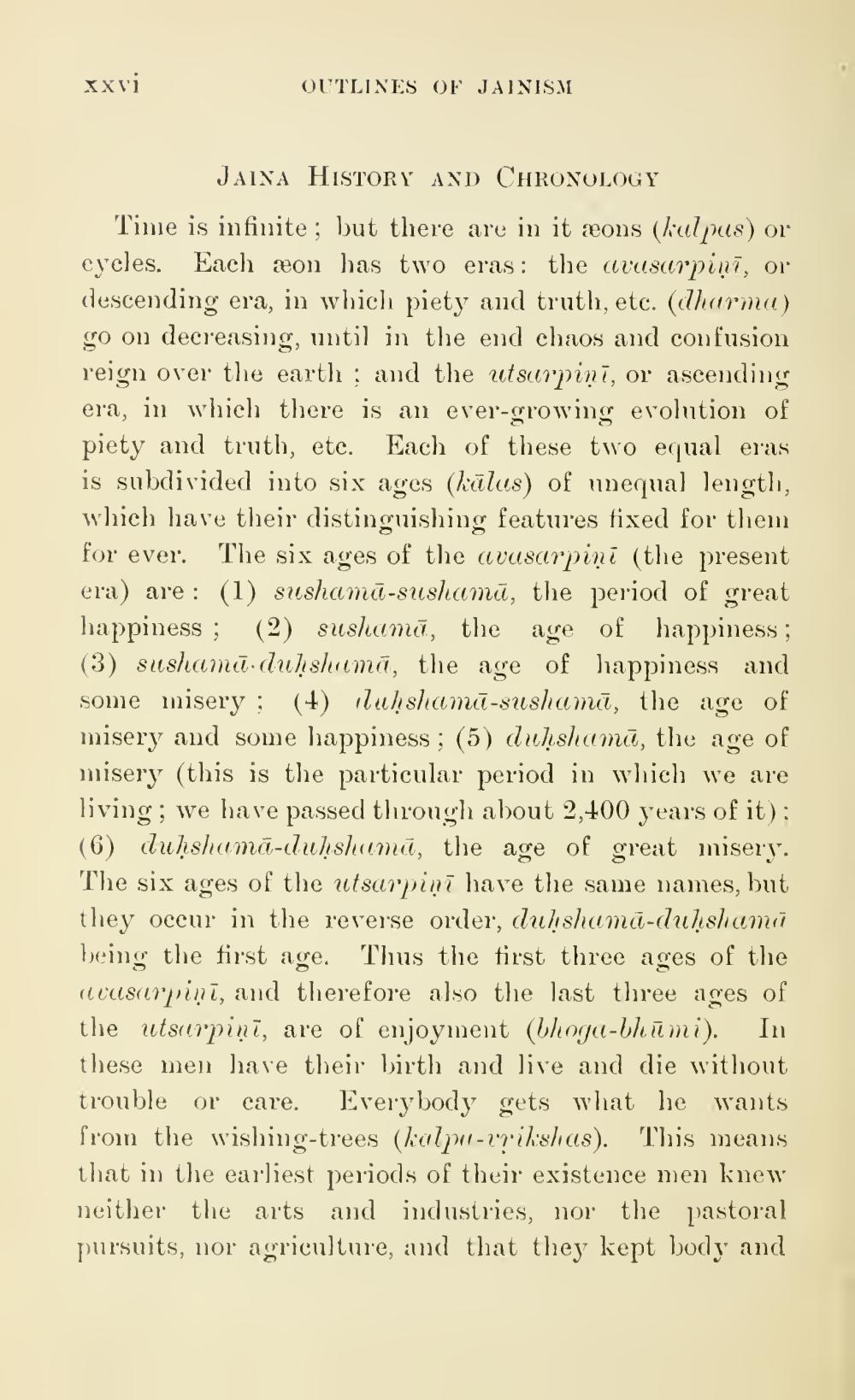________________
xxvi
OUTLINES OF JAINISM
JAINA HISTORY AND CHRONOLOGY Time is infinite; but there are in it æons (kul pus) or eyeles. Each æon has two eras: the ausarpini, or descending era, in which piety and truth, etc. (ilharma) go on decreasing, until in the end chaos and confusion reign over the earth ; and the utsarpini, or ascending era, in which there is an ever-growing evolution of piety and truth, etc. Each of these two equal eras is subdivided into six ages (kūlus) of mequal length, which have their distinguishing features fixed for them for ever. The six ages of the avusarpini (the present era) are: (1) sushamū-sushamū, the period of great happiness ; (2) suslamă, the age of happiness; (3) sushamū duhshuomā, the age of happiness and some misery ; (4) luhsham-sushami, the age of misery and some happiness ; (5) dushamā, the age of misery (this is the particular period in which we are living; we have passed through about 2,400 years of it): (6) duḥshamá-luhshumā, the age of great misery. The six ages of the utsarpinī have the same names, but they oceur in the reverse order, duhshumū-dukshamu being the first age. Thus the first three ages of the acusarpini, and therefore also the last three ages of the utsurpiņi, are of enjoyment (bhoga-bhūmi). In these men have their birth and live and die without trouble or care. Everybody gets what he wants from the wishing-trees (külpı-27ikslas). This means that in the earliest periods of their existence men knew neither the arts and industries, nor the pastoral pursuits, nor agriculture, and that they kept body and




